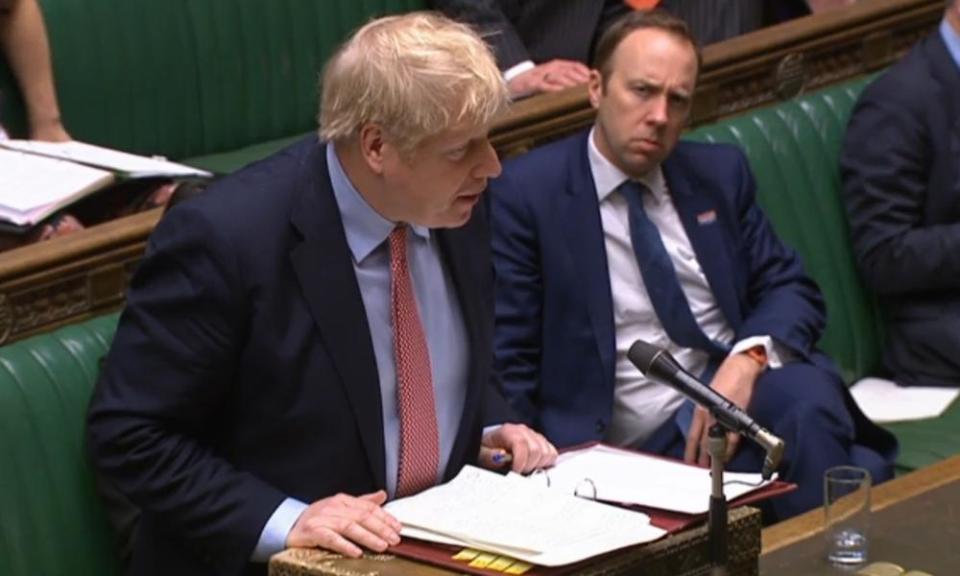Boris Johnson has coronavirus. Why do politicians seem prone to it?

Boris Johnson may have given up shaking hands more than a week ago, but it is not in the nature or the craft of politicians to keep their physical distance from other people.
In this time of isolation, it seems political leaders are more prone than most to bend the rules, apparently unconvinced that they can lead over video link.
Even as advice was going out from the NHS that we should all keep two metres apart, the prime minister was at his podium briefing the country within what looked like transmission range of his medical and scientific advisers.

Only latterly were they moved further apart, as were the journalists asking questions in Downing Street and the MPs in the House of Commons.
Ironically, with most of the population in lockdown, it makes no difference to the rest of us whether MPs and prime ministers are working in Westminster or in the isolation of their study or bedroom at home.
There are no MPs’ surgeries for people to visit and no tours of factories or openings of flower shows. The public will not see them in the flesh. All their business could be done on the phone and through meetings relayed on a computer screen.
But Johnson joins a list of politicians who have tested positive. His health secretary, Matt Hancock, has it too.
Others have tested positive include the Australian home affairs minister, Peter Dutton, the Iranian vice-president Massoumeh Ebtekar and the EU chief Brexit negotiator, Michel Barnier.
Prince Charles is not a politician, but contact with people is key to his role.
They all have something in common: they are very unused to working and being alone.
They are the people who are more likely to get a virus like Covid-19 – and potentially to spread it too.
The more people mix, the greater the risk they put themselves under. Most of the UK is now limited to social interaction within the home, which means for most just a very few people.
The police now have powers to stop and fine us if we drive out for a walk in the hills, even though we are unlikely to meet anybody else on the journey or while exercising the dog.
But that extreme caution does not appear to apply to those at Westminster.
While it is not good to have the prime minister in self-isolation, arguably it could be worse to have his medical and scientific advisers infected as a result of briefing him face to face.
Prof Chris Whitty, the chief medical officer, and Sir Patrick Vallance, chief scientific adviser, are even more fundamental to the UK response to coronavirus.
The academic whose modelling has done more than anything to influence the government’s decision to lock down the country, Prof Neil Ferguson from Imperial, is already ill.
He was seen by video link earlier this week giving evidence to the science and technology select committee of MPs and had clearly not fully recovered.
When he fell ill last week, he said on Twitter that “there is a lot of Covid-19 in Westminster”.
He expanded in a phone interview on Radio 4, saying: “I’ve been in so many meetings in the last few weeks, and a number of my colleagues from other universities who have been advising the government in those meetings have also developed symptoms.”
This week, he and others have given evidence from their homes to select committees and presumably in virtual meetings with government advisers. It is very clear now that the Sars-CoV-2 virus which causes the illness does not spare people in power. The succumbing of the prime minister may do more than anything else could to change the way government works in a pandemic.

